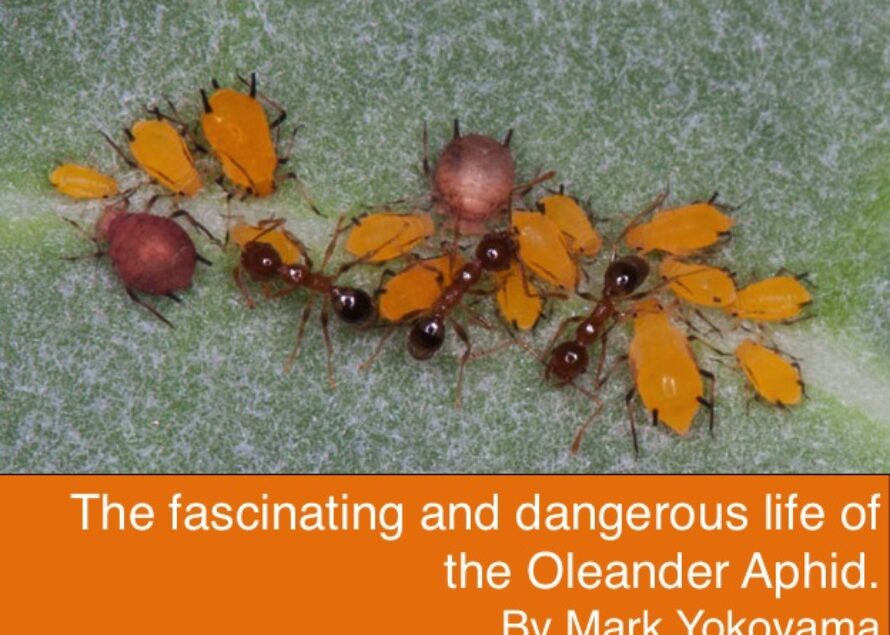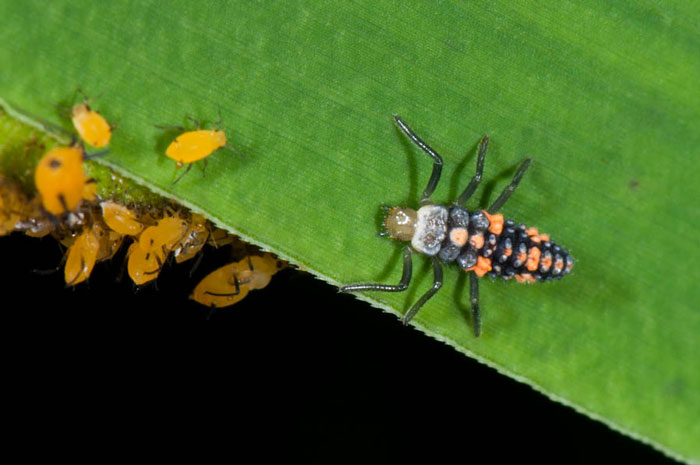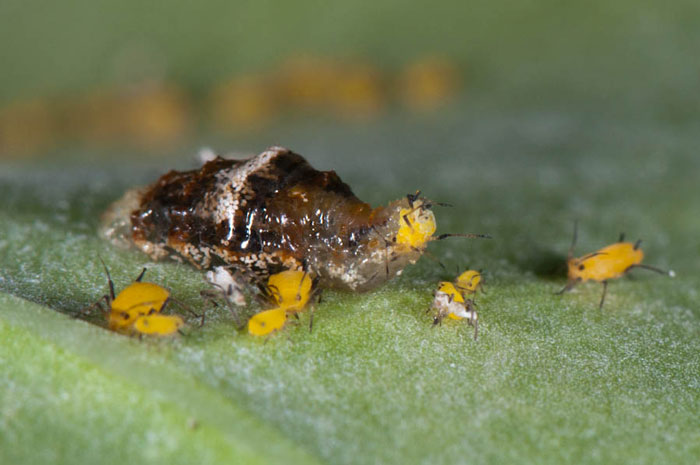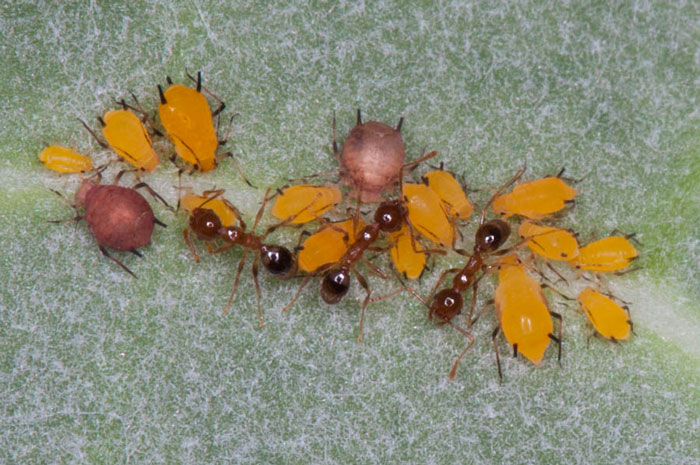The Fascinating and Dangerous Life of the Oleander Aphid

 The oleander aphid (Aphis nerii) is a tiny insect, about 2mm long, but it lives a fascinating life, facing many tiny predators. From the insect family Hemiptera, aphids have piercing, sucking mouthparts, like a straw, and feed on plant juices. The oleander aphid specializes in plants like oleander and milkweed, which are toxic to many other insects. On St. Martin, they are most easily found on the leaves and fruit of the apple of sodom plant.
The oleander aphid (Aphis nerii) is a tiny insect, about 2mm long, but it lives a fascinating life, facing many tiny predators. From the insect family Hemiptera, aphids have piercing, sucking mouthparts, like a straw, and feed on plant juices. The oleander aphid specializes in plants like oleander and milkweed, which are toxic to many other insects. On St. Martin, they are most easily found on the leaves and fruit of the apple of sodom plant.
These tiny orange insects are all female, and essentially clones of each other, a form of reproduction known as parthenogenesis. Unlike most insects, rather than laying eggs, they give birth to live babies known as nymphs. Most adults never grow wings, although some will develop wings if their food supply is threatened. This allows some aphids to move from plant to plant and start new colonies.
Aphids are soft, juicy insects with few defenses, but due to their diet of poisonous plant juices, many potential predators are unable to eat them. Some key predators are ladybugs and their larvae and the larvae of hoverflies (Syrphidae). These insects can often be found in and around colonies of oleander aphids, hunting these vulnerable bugs.
Another threat to the oleander aphid are tiny wasps that parasitize this species. From the family Pteromalidae, these wasps lay an egg inside an aphid and their larva consumes the aphid from the inside. Aphids that have been parasitized by this wasp turn dark in color, and eventually die. The wasp then emerges from the aphid, leaving a thin shell of exoskeleton.
Luckily for some aphids, they also have protectors in the insect world. Some species of ant will tend aphids in exchange for secretions of sugary plant juices. These ants will “tend” aphid colonies, protecting them from predators and even carrying young aphids to other parts of the plant to start new colonies.
You can watch this drama unfold all across the island by looking closely at apple of sodom and oleander plants that have aphid colonies. Look for clusters of tiny orange insects on leaves and fruit, particularly on tender new leaves







